The best Pokémon game that no one ever was
If you’re one of the many who’ve lived and breathed Pokémon since childhood, it’s easy to forget how many Pokémon games have come out since 1996. Even if you don’t count any spinoff titles and lump all dual releases together (i.e., Red and Blue), you still have over twenty games to choose from. If you can’t count the entries in a series on your fingers and toes, there are officially too many for a new person to consider.
Fortunately, the Pokémon formula is so timeless that virtually every mainline game is a good starting point. That said, the series has plenty of peaks and valleys, some of which are truly spectacular. Here are the ten best Pokémon games ranked from least spectacular to absolutely amazing. Whether you’re a beginner looking for a jumping-in point or a longtime fan on the hunt for an excellent entry to replay, here are the ten best Pokémon games.

10 – Pokken Tournament DX
It’s a shame that the Pokken games didn’t take off more than they should have. Fans had been asking for an official Pokemon fighting game for years before Pokken Tournament hit the Wii U in 2016, and the game has a lot going for it. The character roster is full of iconic Pokémon, and its unique “Field Phase” feature allows the game to shift from a two-dimensional arcade brawler to a three-dimensional fighter seamlessly. Pokken Tournament DX, an enhanced port to the Switch, sweetens the deal further by throwing in more characters and beefing up performance.
Unfortunately, the frustrating simplicity of its combat holds Pokken Tournament back. The complex technicality that defines many of the best fighters isn’t here, and games can devolve into button mashers quickly. That said, Pokken Tournament is still a good time, and it’s a superb choice for Pokémon fans and fighting game enthusiasts who don’t want to sink hours into mastering a complex combat system.

9 – Pokémon Snap
Pokémon Snap is a lot different from your conventional Pokémon game. Akin to an on-rails shooter game you’d play in an arcade, you don’t catch a single wild Pokémon or battle even one rival trainer in this game. Instead, you’re taking photos of the little critters to help Professor Oak’s research.
At first, it’s a simple and chill concept, riding along a slow-moving track and snapping pictures of Pokémon living in their natural habitats. However, when you unlock gadgets like Pokémon Food and Pester Balls, things get more exciting. By using these items at the right points in your photographic excursions, you’ll unlock alternate paths full of new Pokémon to photograph.
Playing Pokémon Snap is like taking care of a flower: it’s slow and even monotonous at first, but the game opens up and grows as you put more time and effort into it. Once you’ve unlocked some gadgets, snapping the perfect photo of that one Pokémon that’s eluded you stops being a frustrating game of chance and becomes an engaging puzzle with an intuitive solution. And since you’re graded on how clear and well-composed your photo is, completing one satisfying challenge usually leads to you unlocking a new one.

8 – Pokémon Let’s Go Pikachu! and Let’s Go Eevee!
As the only generation of Pokémon games to be remade twice, every version of Generation One has its own unique charm. If you’re looking for a breezy way to see where the series began, however, you can’t go wrong with the Let’s Go! games.
Let’s Go! strips away many of the series’ standard mechanics to draw in the massive crowd of new Pokémon fans created by Pokemon Go. Luckily, the game makes up for this straightforwardness by implementing some helpful quality-of-life improvements from Go, including Candies you can use to buff a Pokémon’s stats and make it battle-ready almost as soon as you catch it. Its inclusion of follower Pokémon and Mega Evolutions also helps it stand out from other Pokémon games on the Switch.
That said, veteran Pokémon fans won’t have a great time with Let’s Go. The game’s decision to replace wild Pokémon battles with Go-style-catching sequences removes a part of the game that draws in a lot of players, and the exclusion of new evolutions and pre-evolutions of the Generation One game leaves its Pokedex feeling scant. Let’s Go is excellent for beginners, but established Pokémon fans will probably want to skip these experimental departures from the norm.

7 – Pokemon X and Y
Being the first fully 3D entries in the mainline Pokémon series, X and Y had a lot of expectations to live up to. Fortunately, it bore this weight well, emerging from underneath the mountainous pressure as a glittering, polygonal gemstone.
Pokemon X and Y boast one of the biggest regional Pokedexes in the series’ history, bringing back many old favorites like Charizard and Lucario while introducing fantastic new Pokémon like Greninja and Aegislash. Introducing mechanics like Super Training also made it easier for players to train their Pokémon, making the series’ competitive scene more accessible than ever. And, of course, Mega Evolution gave many of the series’ best Pokemon fresh forms and insane power boosts.
For all these new bells and whistles, however, Pokémon X and Y suffer from a frustrating lack of content in some areas. The game’s primary campaign is a disappointingly lean experience that pits you against Team Flare, who are a major step back from the menacing, challenging antagonists introduced in the previous generation. If you’re one of those fans who doesn’t put much stock into a Pokémon game’s pre-post-game content, though, Pokémon X and Y are pretty fantastic.

6 – Pokemon Stadium 2
The Pokémon Stadium games were like a supplement to the Game Boy titles that started it all. You transfer your team over to the game via the Transfer Pak and battle through many opponents, whether they are random CPUs in the game’s stadium mode or the gym leaders waiting in the game’s intimidating Gym Leader Castle.
Even if you didn’t have the Game Boy games and opted for the rentals, Pokémon Stadium 2, in particular, was where it was at. The game lets you pick from all two-hundred-and-fifty-one of the Pokémon available at the time of release, and the game’s then-impressive graphics allowed players to experience Pokémon battles in an epic new dimension.
Once you grew tired of battling, there were also a handful of score-based mini-games that were so much fun to play. While it’s no replacement for Mario Party, Pokémon Stadium‘s mini-game mode is an excellent time, especially if you can get a few friends to play with you.
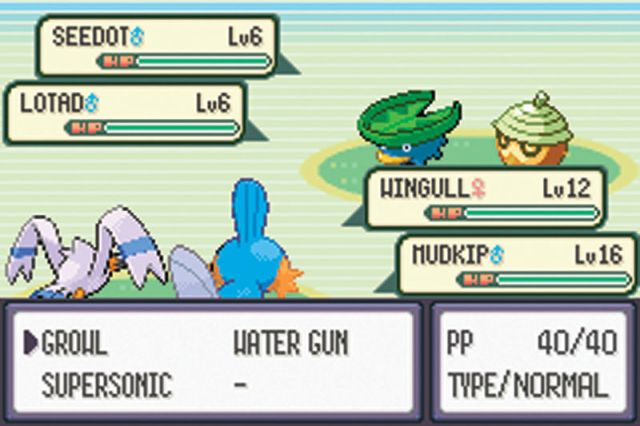
5 – Pokémon Emerald
While the Generation One Pokémon games launched the world’s most lucrative franchise, Generation Three proved the series had staying power despite Yu-Gi-Oh giving it stiff competition. Though this generation received some impressive remakes in Pokémon Omega Ruby and Alpha Sapphire for the 3DS, Pokémon Emerald for the Game Boy Advance remains arguably the best way to experience one of the series’ best adventures.
Between the clean visuals, stellar soundtrack, and the excellent monster variety, Pokémon Emerald has all the fundamentals of an excellent Pokémon game. Yet the feature that elevates Emerald above even the Generation 3 remakes is the Battle Frontier. Diehard fans consider the Battle Frontier to be one of the best examples of post-game content the series has ever offered, and it presents potentially the most significant challenge you’ll encounter in a mainline Pokémon game.
While the game relies too much on HMs in the latter half of the primary campaign, the Hoenn region is insanely fun to explore. Even an admitted overabundance of water can’t dilute the pure feeling of adventure this Pocket Monster Title provides.

4 – Pokémon Platinum (Diamond and Pearl)
Many consider the fourth generation of Pokémon to be the franchise’s best in terms of design, characters, and activities. Pokémon Diamond and Pearl delivered an epic experience by taking full advantage of the leap in hardware between the Game Boy Advance and the Nintendo DS. Pokemon Platinum cranks everything about these adventures up to eleven.
The Pokémon design here was at its peak: from the trio of starters to the newly introduced evolutions to Pokémon from previous generations like Rhyperior, Dusknoir, and Electivire. The Legendaries of the Sinnoh region are especially impressive, being the first Pokemon to truly invoke divinity through their complex, intimidating designs.
The impressiveness of the game’s character design doesn’t stop at the Pokemon. This game’s cast comprises some of the most memorable characters the franchise has ever introduced. Cynthia’s elegant, layered design projects the grace and power one would expect from the Pokémon League Champion, and Cyrus’ stiff posture and soulless glare perfectly capture the Team Galactic leader’s heartlessness in a way dialogue never could.
Pair that with the endgame being fun and diverse, especially in Platinum’s case. If you have the third generation of Pokémon games like the Kanto games or the Sinnoh games slotted into the GBA slot, you can encounter additional, exclusive mons in your game. Nowadays, this is much harder to do, but this was a nifty feature at the time.

3 – Pokémon Heart Gold and Soul Silver
Many fans consider the Generation Two Pokémon games the most innovative titles in the series. Between the unique day/night system, killer soundtrack, and arguably the best post-game surprise in any Pokémon game, Generation Two offers an experience that even modern titles can’t match. While some criticize the mid-game pacing of these titles, one thing is clear: if you’re going to play Generation 2, play Heart Gold or Soul Silver for the DS.
Heart Gold and Soul Silver are hands-down the best remakes the series has ever offered. They give the original Gameboy titles a fresh coat of paint and flesh out the world with new dungeons and events not found in the original, like the addictive Pokeaethlon or the enticing ruins of Alph. The game even adds additional context to the game’s story by confirming a long-held fan theory about the identity of the game’s rival.
What’s more, the addition of Generation 4 mechanics like the physical/special stat split for attacks and the inclusion of new moves like Earth Power go a long way to keep these games feeling modern. Heart Gold and Soul Silver didn’t need to go as hard as they did, but it’s easy to see why used copies of these games sell for upwards of $70 to this day.
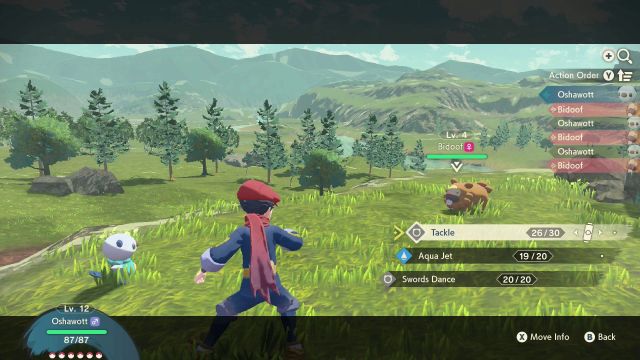
2 – Pokémon Legends Arceus
Though Pokémon is a predominately iterative series, Pokémon Legends: Arceus is the first mainline game to shake up the formula that has powered these games for 25 years. Some may call Legends: Arceus a proof of concept, yet nearly every risk this game takes not only succeeds, but flourishes.
The mix of traditional turn-based Pokémon battles, real-time boss battles, and catching mechanics is beautiful here. The difficulty curve is just as accessible as any mainline Pokémon title. Still, the open-world maps and powerful alpha Pokémon add enough optional challenge for longtime fans to sweat if things feel too easy. Legends: Arceus even introduces elegant quality-of-life to the franchise, like the speedy results screen after a battle and the ability to change a Pokemon’s move set at will from the menu.
As of Pokémon Scarlet and Violet, it looks like mainline Pokémon games will embrace the open-world elements that Legends: Arceus introduced fully. Yet even if that’s the case, Legends: Arceus offers so much that it deserves a subseries of its own.
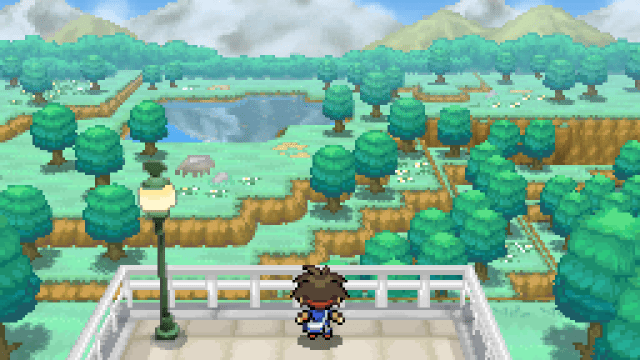
1 – Pokémon Black and White (and Black 2 and White 2)
To some, Pokemon’s Generation 5 games are a soft reboot of the franchise. To others, it is a last hoorah of Pokémon’s 2D art style before the series’ leap to the 3DS. Regardless of who you are, Black and White are fantastic games that hardly show their age over a decade later.
These games are the total package. The animated Pokémon sprites breathe life and personality into each monster, sometimes more than the 3D models in modern Pokémon games. The soundtrack is stellar, ranging from catchy town tracks to high-energy battle themes. Even the story veers into the thematically captivating territory, pitting players against an evil team who raise valid questions about the innate morality of the series’ monster-fighting concept while still being love-to-hate antagonists. Black and White overflow with passion and creativity, and every Pokemon fan owes it to themselves to play them.
Some fans were dismayed upon release that only Pokémon introduced in Generation 5 are usable until the postgame of Black and White. However, even this gripe has a silver lining. In lieu of the usual “special edition” game that remixes the previous entries and adds some extra content (a la Pokémon Emerald), Black and White received full-fledged sequel games in Black 2 and White 2. These titles add fan-favorite Pokémon back into their main story, and many fans consider these titles to be even better than their predecessors. Perhaps it’s unfair to lump two sets of games together into the number 1 slot. Yet if you judge Generation 5 strictly by its quality, you’ll find plenty to love from start to finish.

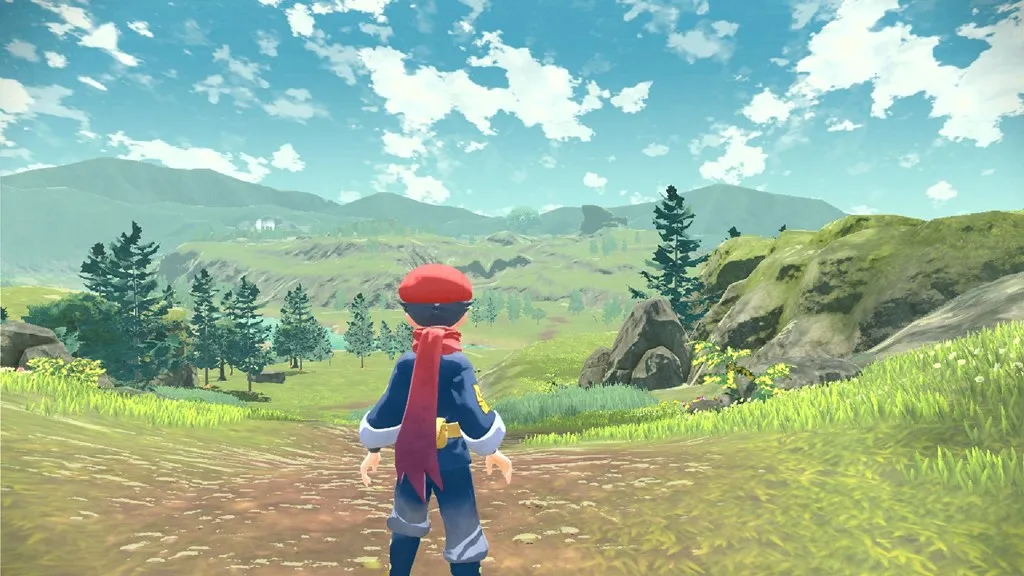


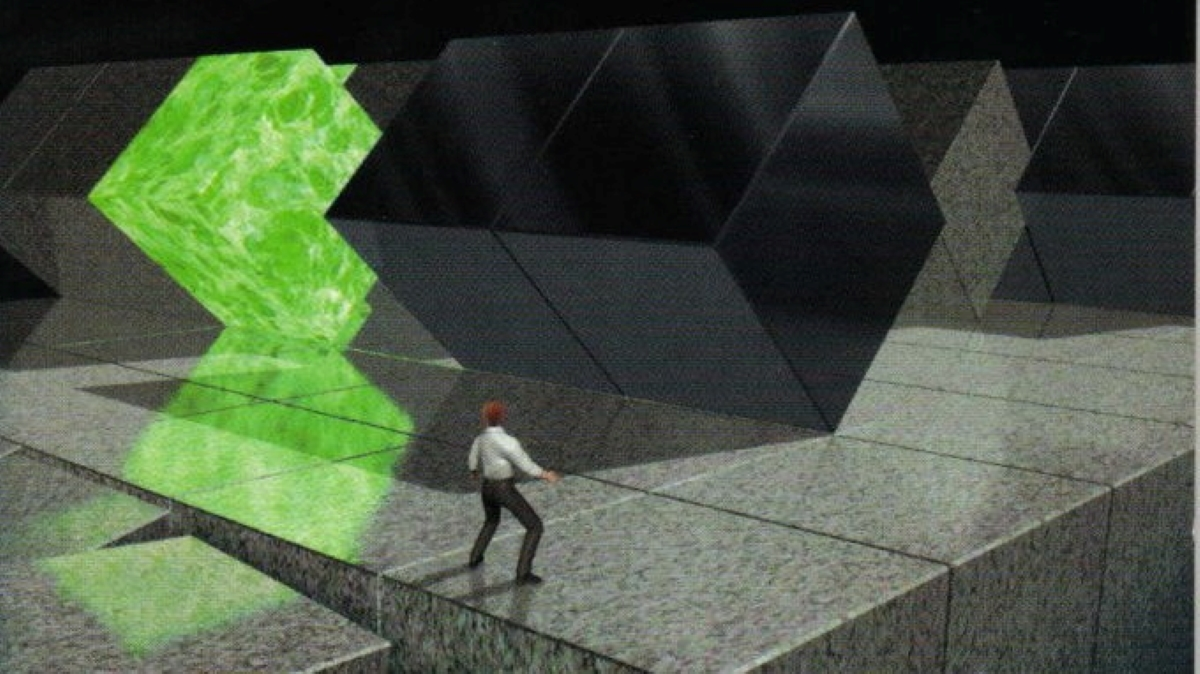


Published: Oct 30, 2024 04:32 pm